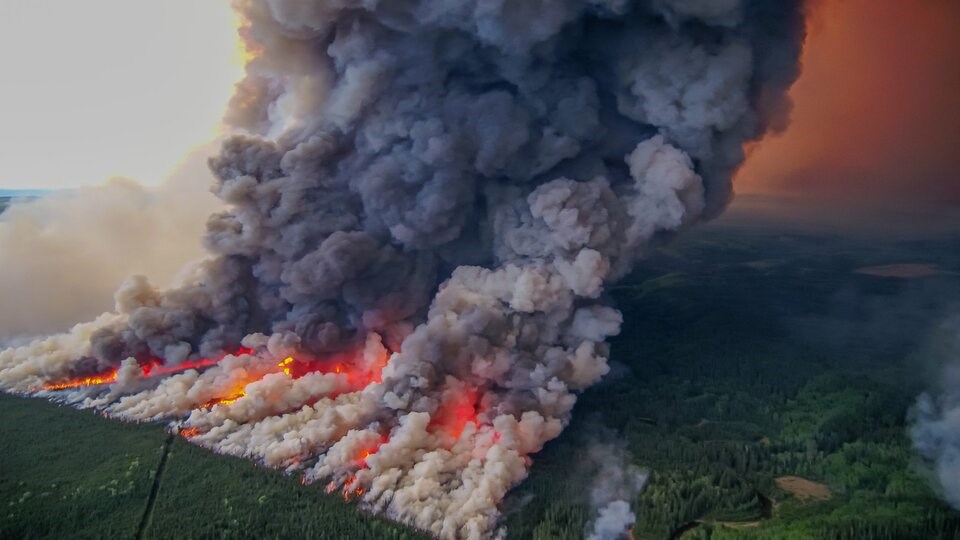Climate change has dried out British Columbia’s forests, making them more flammable and driving a spike in wildfire activity since 2005 — a trend that is expected to worsen in coming years, a new study has found.
The research — published in the journal Nature this week in a collaboration between experts at the Canadian Forest Service, the private sector, and several universities in B.C. and California — analyzed maps of wildfire perimeters and annual climate data between 1919 and 2021. Over 100 years, wildfire activity saw declines alongside an increasingly wet climate. But in 2005, those trends reversed.
While overall rainfall remained steady, it increasingly fell in seasonal bursts outside of the fire season. A rapid rise in warming due to human-caused climate change, meanwhile, drove high rates of evaporation in B.C.'s forests, leaving them primed to burn in the spring and summer months, the study found.
“We’re finding that drought is not letting up,” said Lori Daniels, a professor in the University of British Columbia’s Faculty of Forestry and a co-author on the study.
“We've had these prolonged droughts and these very hot dry springs and summers that are coinciding with these extreme fire seasons.”
Some regions of the B.C. saw slight deviations from the provincial trend. The province’s coastal zone saw the largest temperature increase at 1.25 C, but higher levels of forest moisture, a lack of lightning strikes and extensive land clearing buffered some of the potential rise in wildfires, according to the study. But authors warned that “fire winds” — warm and dry outflow winds from the Interior — should put people living in the area on “heightened alert.”
In B.C.’s central region, where summer lightning is abundant, the study found a 0.98 degree Celsius increase between 1970 and 2021 alongside an abrupt decline in summer precipitation and forest moisture. That all translated into increased wildfire activity, the researchers found.
“Given the current and projected climate trajectory, it is likely that the potential for wildfire will continue to increase in the upcoming century, even under the most optimistic climate scenario,” wrote the authors.
Infestation, firefighting and logging has made fires worse
The wildfire risk that comes from drying out of B.C.’s forests has only been made worse by pine beetle infestations and land-use practices, which for decades have favoured extinguishing fires at any cost.
When fire is allowed to burn regularly during shoulder seasons, Daniels says it opens up the may for a mixed species forest, rich in biodiversity. It also creates breaks in the landscape that can stop bigger fires once they have started and gives firefighters anchor points to fight fires once they become more aggressive.
“We’ve unintentionally made ourselves more vulnerable,” she said.
At the same time, Daniels said clear-cut logging practices also leave large openings in the forest, making them prone to drought. In those openings, slash piles only add to the buildup of wood fuel.
“There's so much wood left behind that they're continuing, fires are spreading right through them and not slowing down,” she said.
Where trees are replanted, industry has favoured stands of single conifer species, which are more fire prone than the deciduous trees kept at bay through thinning and herbicides, said the researcher.
The drying effect of higher temperatures driven by climate change and the historical footprint of firefighting and logging on the ground, has led to an uptick in large, high severity wildfires over the past 20 years, the study found.
The authors said they were unsurprised by the surge in fire activity over the past two decades.
“What is surprising, however, is the early onset of the increase in wildfire activity around the year 2000 — decades earlier than anticipated — and the sheer magnitude of fire-season severity,” they wrote.
A record rise in area burned
In B.C., where fires tend to burn later into the fall, the province continues to set its own grim record this year, with the 2023 wildfire season so far having burned an area equal to about 60 per cent of Vancouver Island.
On Wednesday, provincial Emergency Management Minister Bowinn Ma said that although “the end is near” for B.C.’s fire season, the "sleeping giant" in the season of natural disasters is drought. About 80 per cent of B.C. is currently under level four or five drought conditions, the two highest designations.
B.C. has seen four of its most destructive wildfire seasons since 2017. Three of those saw more than a million hectares of forest burn across the province. By comparison, between 1919 and 2016, only three wildfires seasons burned more than half a million hectares, according to the study.
That's left researchers to conclude that B.C. will join a shortlist of global hot spots for wildfire over the coming decades.
“British Columbia is alongside California, Australia and the Mediterranean countries in southern Europe where catastrophic fire driven by climate change superimposed on decades of land-use practices has made our ecosystems more vulnerable,” said Daniels.
“They burn through our ecosystems and into our communities with tremendous devastating losses. So this is it. This is our new reality.”



